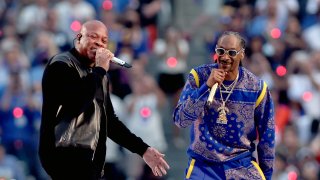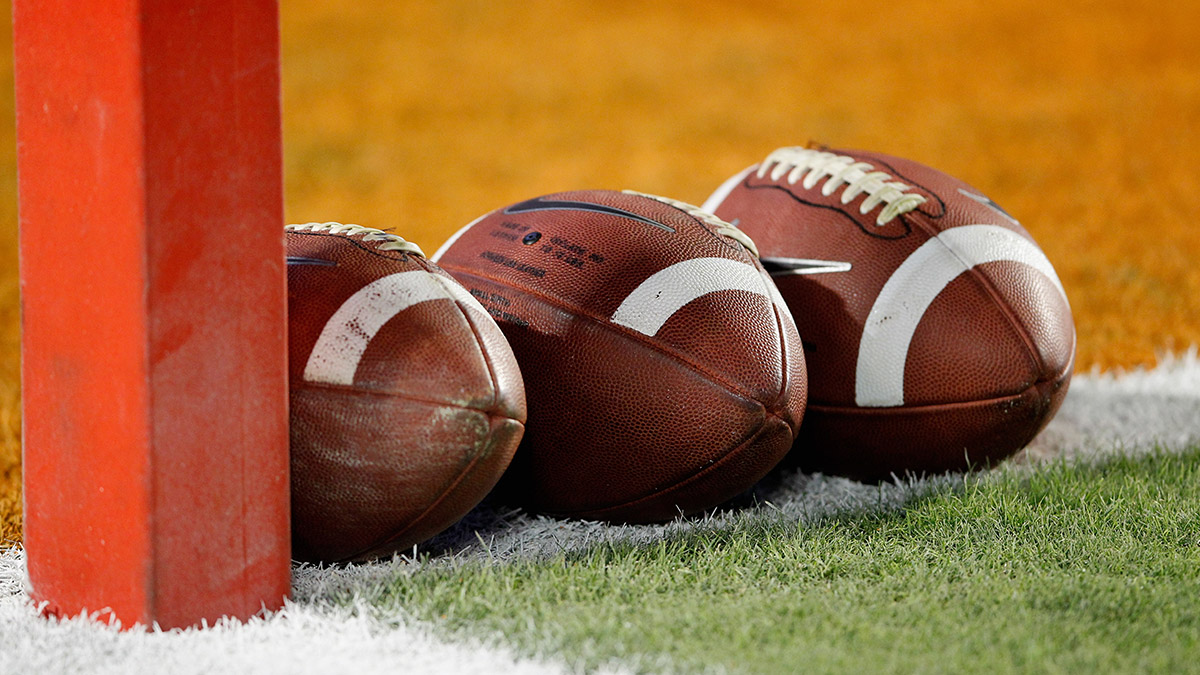
Halftime shows have been a national trademark performance for decades. Since the first Super Bowl in 1967, being offered to headline the event has always been one of the highest honors.
Though the first few halftime shows might not have featured chart-topping artists, as time went on and the Super Bowl itself evolved, halftime shows became exclusively performed by the best of the best.
Starting with solely marching bands and instrumentalists, the halftime show grew to highlight rock bands like The Rolling Stones, solo vocalists like Diana Ross and pop dance sensations like Jennifer Lopez and Bruno Mars.
Here’s a look at why halftime shows began and how they evolved over the years.
Get top local stories in DFW delivered to you every morning. Sign up for NBC DFW's News Headlines newsletter.
What is the purpose of the Super Bowl halftime show?
The Super Bowl halftime show serves as an intermission for players, coaches and spectators, embarking in the experience. A full game of football takes approximately three hours total, so it is only natural to need some sort of break in between.
And ever since the Super Bowl began in 1967, that intermission has been a platform for entertainment. More now than before, the show is one of the most entertaining parts of the Super Bowl experience, as bookers choose headliners who will keep a crowd captivated and invested throughout the entirety of the program.
Sports Connection
Connecting you to your favorite North Texas sports teams as well as sports news around the globe.
What have other halftime shows looked like in the past?
Super Bowl halftime shows have always been some of the most captivating performances, anticipated by audiences all over the nation. Performers leave everything on stage, as they are representing the U.S. in its entirety for about 15 minutes in between halves of the biggest game of the year.
Halftime shows are glitzy and glamorous, filled with smoke, fireworks and performance galore, but they are also engrossed with star-studded talent. The headliners who are chosen are undoubtedly some of the most accomplished and influential musicians in the industry, and this year, the trend continues with five rap and R&B legends taking the stage.
Let’s take a look at some notable halftime performances from the past:
- Dr. Dre, Kendrick Lamar, Snoop Dogg, Eminem, Mary J. Blige and 50 Cent - Super Bowl LVI (2022)
- The Weeknd - Super Bowl LV (2021)
- Shakira and Jennifer Lopez - featuring Bad Bunny, J Balvin and Emme Muñiz - Super Bowl LIV (2020)
- Maroon 5 - featuring Travis Scott and Big Boi - Super Bowl LIII (2019)
- Justin Timberlake - Super Bowl LII (2018)
- Lady Gaga - Super Bowl LI (2017)
- Coldplay - featuring Beyoncé, Bruno Mars and Mark Ronson - Super Bowl 50 (2016)
- Katy Perry - featuring Lenny Kravitz and Missy Elliott - Super Bowl XLIX (2015)
- Bruno Mars - featuring the Red Hot Chili Peppers - Super Bowl XLVIII (2014)
- Beyoncé - featuring Destiny’s Child - Super Bowl XLVII (2013)
- Madonna - featuring Nicki Minaj, LMFAO, Cee Lo Green, Andy Lewis and M.I.A. - Super Bowl XLVI (2012)
And that was only in the last 10 years.
Going even further in the history books, we had the pleasure of seeing these popular chart-toppers put on the show of a lifetime: Bruce Springsteen (2009), Tom Petty and the Heartbreakers (2008), Prince (2007), The Rolling Stones (2006), Paul McCartney (2005), Aerosmith and NSYNC (2001), Diana Ross (1996), Michael Jackson (1993), and many more.
Which halftime show has been the most memorable?
It’s safe to say that Janet Jackson’s Super Bowl halftime show received some of the most residual traffic post-performance. Yes, the performance was one of the best held on the halftime stage, however Jackson is remembered by more than just her vocals.
The scandalous mishap referred to as “Janetgate” or “Nipplegate” occurred during Jackson and Justin Timberlake’s halftime performance for Super Bowl XXXVIII, which took place on Feb. 1, 2004. Jackson’s breast was exposed by Timberlake for 9/16ths of a second during their performance and though the slip was deemed as a “wardrobe malfunction,” the pair received quite a bit of backlash following Super Bowl 38.
In fact, Super Bowl XXXVIII has been named one of the most memorable broadcast events in NFL history. Jackson’s career even took a dive to the worst when the FCC (Federal Communications Commission) began to investigate the incident, ultimately leading to the creation of a documentary highlighting the night’s provocative spectacle. Jodi Gomes’ film “Malfunction: The Dressing Down of Janet Jackson” popularized, and Jackson’s career never heard the end of it.
Timberlake’s career clearly did not suffer as bad, as he went on to headline Super Bowl LII’s halftime show 14 years later in 2018. And to no one’s surprise, the “Suit & Tie” singer dominated that stage.
How have Super Bowl halftime shows changed over the years?
Though they were always entertaining, halftime shows were not always as memorable as they are today.
The first Super Bowl halftime show was performed by the University of Arizona Symphonic Marching Band, the Grambling State University Marching Band, trumpeter Al Hirt and the Anaheim High School Ana-Hi-Steppers Drill Team and Flag Girls. The performance featured 300 pigeons and a Bell Rocket Air Men jetpack demonstration. It was titled “Super Sights and Sounds” and was held at the Los Angeles Memorial Coliseum.
Back in 1967, halftime shows valued instruments and simplicity rather than performance art. Fast forward a couple of decades later -- now halftime shows explode with flashy dancers, fireworks, glitz and glam.
In 2020, Shakira and Jennifer Lopez dominated the halftime show with their Latin-pride medley, alongside an array of talented dancers dressed in white to light up the stage. “Each segment - Shakira first, then Lopez, then together - was a kaleidoscope of rhythms, a demonstration of how much Latin (and Afro-Latin) music has contributed to American pop,” said the New York Times.
What will the Super Bowl halftime show look like this year?
Super Bowl LVII’s headliner will be the one and only, Rihanna.
The once-in-a-generation artist turned down performing at the 2019 Super Bowl (which was performed by Maroon 5) in solidarity with human rights activist and NFL player Colin Kaepernick. But now in 2023, Rihanna will be making her Super Bowl debut on the big stage in State Farm Stadium in Glendale, Ariz.
The "Love On The Brain" singer is a mega-popstar, currently holding 9 Grammys, 12 Billboard Music Awards and 13 American Music Awards under her belt. Her latest single "Life Me Up" was featured in the 2022 film Black Panther: Wakanda Forever.



